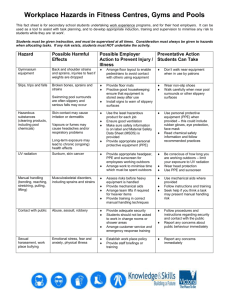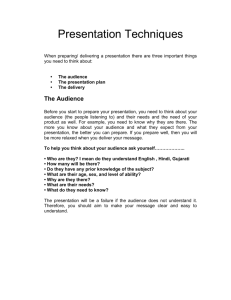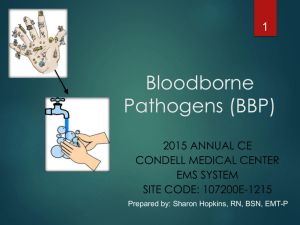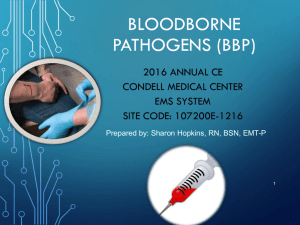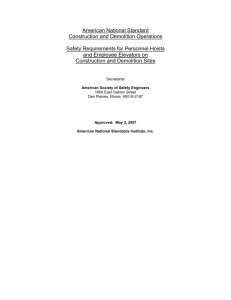Health and Aged Care
advertisement
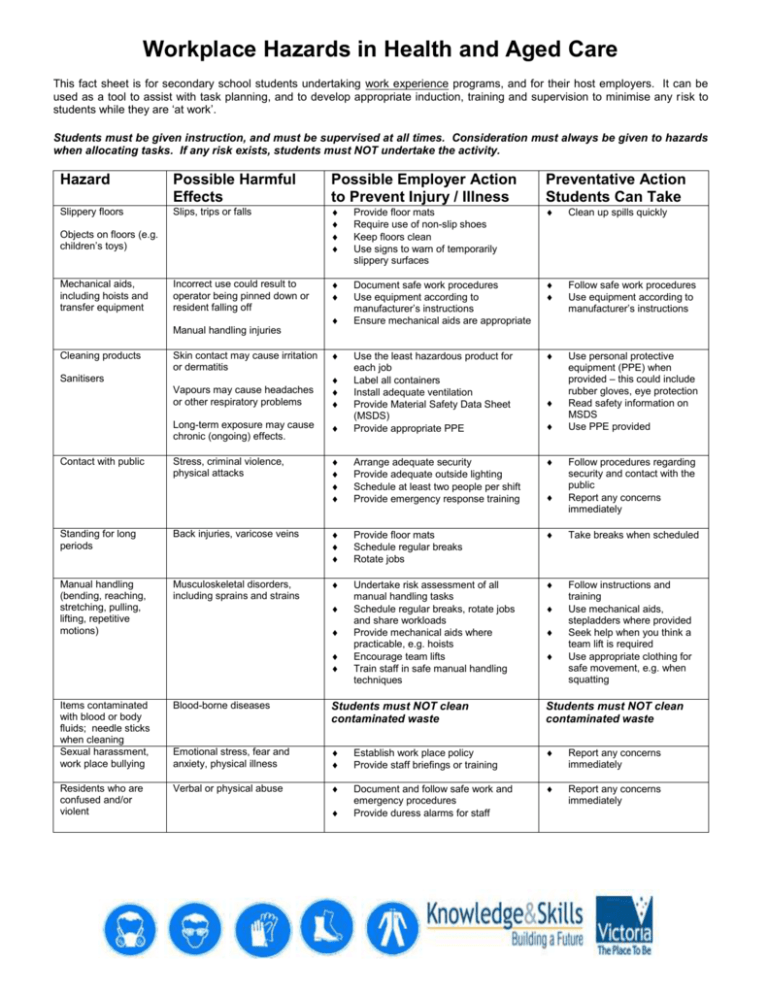
Workplace Hazards in Health and Aged Care This fact sheet is for secondary school students undertaking work experience programs, and for their host employers. It can be used as a tool to assist with task planning, and to develop appropriate induction, training and supervision to minimise any risk to students while they are ‘at work’. Students must be given instruction, and must be supervised at all times. Consideration must always be given to hazards when allocating tasks. If any risk exists, students must NOT undertake the activity. Hazard Possible Harmful Effects Possible Employer Action to Prevent Injury / Illness Preventative Action Students Can Take Slippery floors Slips, trips or falls Provide floor mats Require use of non-slip shoes Keep floors clean Use signs to warn of temporarily slippery surfaces Clean up spills quickly Incorrect use could result to operator being pinned down or resident falling off Document safe work procedures Use equipment according to manufacturer’s instructions Ensure mechanical aids are appropriate Follow safe work procedures Use equipment according to manufacturer’s instructions Use personal protective equipment (PPE) when provided – this could include rubber gloves, eye protection Read safety information on MSDS Use PPE provided Objects on floors (e.g. children’s toys) Mechanical aids, including hoists and transfer equipment Manual handling injuries Cleaning products Skin contact may cause irritation or dermatitis Long-term exposure may cause chronic (ongoing) effects. Use the least hazardous product for each job Label all containers Install adequate ventilation Provide Material Safety Data Sheet (MSDS) Provide appropriate PPE Stress, criminal violence, physical attacks Arrange adequate security Provide adequate outside lighting Schedule at least two people per shift Provide emergency response training Sanitisers Vapours may cause headaches or other respiratory problems Contact with public Follow procedures regarding security and contact with the public Report any concerns immediately Standing for long periods Back injuries, varicose veins Provide floor mats Schedule regular breaks Rotate jobs Take breaks when scheduled Manual handling (bending, reaching, stretching, pulling, lifting, repetitive motions) Musculoskeletal disorders, including sprains and strains Undertake risk assessment of all manual handling tasks Schedule regular breaks, rotate jobs and share workloads Provide mechanical aids where practicable, e.g. hoists Encourage team lifts Train staff in safe manual handling techniques Follow instructions and training Use mechanical aids, stepladders where provided Seek help when you think a team lift is required Use appropriate clothing for safe movement, e.g. when squatting Items contaminated with blood or body fluids; needle sticks when cleaning Sexual harassment, work place bullying Blood-borne diseases Students must NOT clean contaminated waste Students must NOT clean contaminated waste Emotional stress, fear and anxiety, physical illness Establish work place policy Provide staff briefings or training Report any concerns immediately Residents who are confused and/or violent Verbal or physical abuse Document and follow safe work and emergency procedures Provide duress alarms for staff Report any concerns immediately

